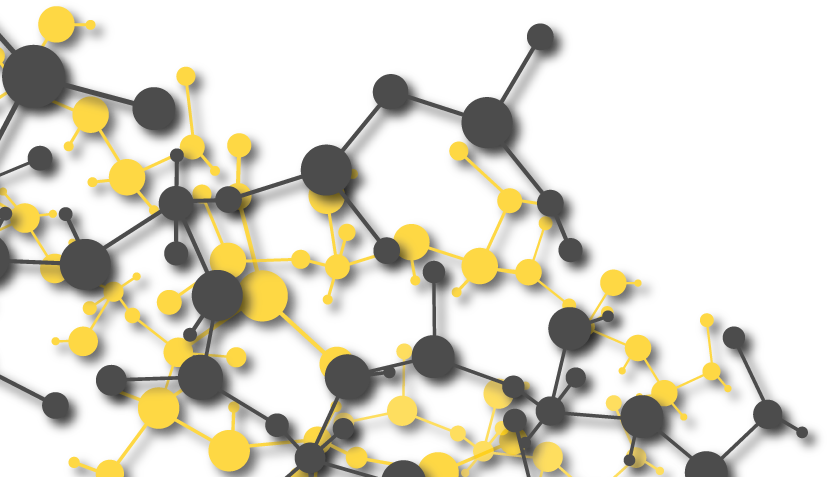What is MMA monomer? Methyl methacrylate (MMA) is a monomer that’s also known as methacrylic acid, methyl ester.
A key building block for acrylic-based polymers, MMA has applications that include safety glazing, exterior paints, vinyl impact modifiers, adhesives, illuminated light displays, and more. There are several synthetic ways to make the MMA chemical as the one most widely used is the three-step process of adding acetone to hydrogen cyanide (HCN) and moves to acetone cyanohydrin.
History of Methyl Methacrylate
The history of the formulation of methyl methacrylate monomer began during a time when acrylic acids were first being synthesized in the early 1800s. German chemists took roughly 85 years to develop acrylic acid in 1843. Then it took another 22 years for them to make methacrylic acid, and then from that step methanol was added to form the chemical reaction of methyl methacrylate, which would become known as acrylic polymer.
Yet still in that time, the possibilities of using methacrylic acid to make was still not readily understood. It wasn't until roughly the 1930s when acrylic polymers appeared with the polymerization of metal acrylate.
In this article, we provide a general overview of this important monomer, covering everything from its polymerization to important safety and handling considerations. Here are 5 key facts about methyl methacrylate monomer (MMA):
1. The Basics of Methyl Methacrylate
As previously mentioned, MMA is foundational for many acrylate polymers and is an essential comonomer in paint, coatings, and adhesives resin formulations. A comonomer consists of one monomer that is added to another monomer to become a copolymer. In free radical initiated copolymers, MMA chemical structure elevates the Tg (glass transition) and contributes durability, strength, transparency, and UV and abrasion resistance.
The chemical structure of MMA is shown below.
Here are several other key pieces of information about methyl methacrylate:
|
CAS Number |
80-62-6 |
|
EINECS Number |
201-297-1 |
|
Empirical Formula |
C5H8O2 |
|
Molecular Weight |
100.12 |
|
Melting Point |
-48 °C (-54℉) |
|
Boiling Point |
101°C (214℉) |
|
Flash Point |
2°C (36℉) |
Additionally, it’s important to note that the Tg value for PMMA homopolymer is 105°C. In polymers, MMA contributes durability, hardness, impact strength, scratch resistance, and clarity.
2. The Polymerization of MMA
Polymerization involves bonding smaller monomers so that they become a polymer. When it comes to polymerization, the range of acrylic copolymers that can be used with MMA is extensive. Monomer feeds can include:
- Butyl acrylate.
- 2-Ethylhexyl acrylate.
- Methyl methacrylate and other methacrylate esters.
- Acrylic acid and methacrylic acid.
- Styrene.
- Butadiene.
The monomer composition selected for copolymers is driven by the desired Tg of the resin, ranging from -30˚C to > 30˚C. The free-radical reactivity ratios for MMA copolymer systems have been well studied and are available in the literature.
For reference Tg values of some comonomers, please consult the table below.
|
AA |
Sty. |
MMA |
BA |
2-EHA |
|
87˚C |
100˚C |
105˚C |
-45˚C |
-55˚C |
3. The Applications of Methyl Methacrylate
Methyl methacrylate monomer readily polymerizes to form high molecular weight homopolymers (where a polymer is created from many copies of a single monomer) and copolymers.
The principal use for MMA monomer is to form polymethyl methacrylate (PMMA) homopolymer for the production of cast and extruded acrylic sheets. These cast PMMA sheeting products exhibit good optical clarity, high transparency, and UV stability. Methyl methacrylate MMA products and applications include…
- Shatterproof glass replacements.
- Safety glazing.
- Panels and lighting displays.
- Outdoor lighting fixtures.
- Plumbing fixtures and components.
Outside of glazing and sheet applications, the largest use for MMA is as a comonomer in paints and coatings, such as exterior paints and paper coatings. Polymers and copolymers of methyl methacrylate are in:
- Metal and foil coatings.
- Industrial finishes.
- Floor polishes.
- Textile finishes.
- Adhesives.
- Sealants.
- Construction materials.
- PVC impact modifiers.
- Packaging.
- Inks.
These polymers are produced as waterborne, solvent, and dispersion resins for these applications. Methyl methacrylate-butadiene-styrene (MBS) resins are used as impact modifiers for clear, rigid PVC, an example of which would be bottles. In addition, MMA can partially replace styrene monomer in unsaturated polyester resins to give better weather resistance and longer outdoor life.
For products such as signage, displays, bath enclosures, spas and tabletop surfaces, as well as automotive lights and light fixtures, methyl methacrylate polymerization can be cast into a solid form.
Applications also include engineering adhesives. These are liquid, reactive, durable adhesives for bonding a variety of substrates, and they consist of MMA monomer with PMMA. Low-viscosity, rapidly curing MMA reactive resin systems are highly effective for sealing and filling cracks and pores in concrete surfaces and structures.
These adhesives are desired due to their ability to bond differing surfaces together, the high resistance of fatigue, and a higher peel rate. MMA adhesive can cure at room temperature while being more temperature resistant.
Other MMA copolymer applications include mining flocculants, soil stabilization polymers, waterproofing agents, and oil field drilling fluids. While MMA can cause safety concerns when coming in direct contact with the skin and eyes, and cause serious problems with the nose, through and lungs, PMMA is compatible with human tissue. It is used in several medical technologis such as acrylic bone cement and implant introcular lenses for the eyes.
MMA was once commonly used for nail enhancements. However, FDA research concluded that it was poisonous and should not be used in this manner. While some state have banned MMA nails, other states have not made it illegal as it can still be found in some nail salons.
4. The Composition of a Methyl Methacrylate Emulsion
To provide an example of a methyl methacrylate application, we’ve included an example of an emulsion composition involving MMA.
Below is a typical paint formulation using MMA monomer in a copolymer.
Composition Reactor
|
Deionized water |
90.9 g |
Momer Feed System A
|
Deionized water |
372.0 g |
|
Rhodapex CO-436 |
8.2 g (1 weight %/polymer) |
|
Acrylic acid (GAA) |
4.6 g (0.9 weight %/polymer) |
|
Styrene (St) |
74.6 g (15.1 weight %/polymer) |
|
Methyl methacrylate (MMA) |
80.3 g (16.3 weight %/polymer) |
|
Butyl acrylate (BA) |
195.2 g (39.5 weight %/polymer) |
|
2-EHA (EHA) |
129.6 g (26.3 weight %/polymer) |
|
Subtotal |
(873.9 g) |
Initiator Feed System B
|
Deionized water |
34.6 g |
|
Ammonium Persulfate |
1.46 g (0.3 weight %/polymer) |
|
Subtotal |
(36.1 g) |
|
Total |
1,000.0 g |
Emulsion/Polymer Characteristic
|
Tg (Measured value) |
-12˚C |
|
Viscosity |
99 mPa.s |
|
Nonvolatile substance, ca |
0.50% |
|
Acid value |
7.2 mg KOH/g |
|
Particle size |
0.22 μm |
|
pH |
9.0 (Ammonia) |
5. Safety and Handling for MMA
Giving proper attention to safety is critical when handling methyl methacrylate for several reasons.
MMA is a flammable, colorless liquid which melts at -48˚C and boils at 101˚C. While MMA is soluble in the most organic solvents, it is insoluble in water.
In addition to being flammable, direct contact with MMA can cause irritation of the eyes, skin, nose, and throat. Considered a skin sensitizer, methyl methacrylate can produce allergic reactions from contact, in which future exposures can cause itching and a skin rash.
Even more seriously, inhalation of MMA vapor or mist can cause irritation of the nose, throat, and lungs and can be fatal in high concentrations.
Because MMA can violently homo-polymerize and can generate considerable heat and pressure, MMA is only provided in a stabilized form. To ensure MMA’s stabilizer can function effectively, it’s important to store MMA under air and replenish the dissolved oxygen.
To obtain a Safety Data Sheet (SDS) and other handling information on MMA, please contact us or call us. At Gantrade Corporation, we encourage our customers to have a comprehensive understanding of the health, safety, environmental, and regulatory information on our products before handling.
How to Purchase High-Purity MMA
If you’re looking to purchase high-purity MMA, Gantrade Corporation provides this monomer in 20 MT (44,080 lb.) for industrial use only.
The purity of our methyl methacrylate is ≥ 99.9%, and our MMA contains only traces of water (0.035% max.) and acidity as methacrylic acid (0.0035% max.).
For storage and transportation, we’ve added an inhibitor, usually 15-18 ppm of Topanol A, which is FDA compliant and nonstaining and exhibits low volatility.
If you have questions about substituting Topanol for MEHQ or commingling Topanol-stabilized MMA with MEHQ-stabilized MMA, simply contact us, and we’d be happy to answer your questions.
Below is a table containing Gantrade’s specifications for methyl methacrylate.
Sale Specifications: MMA
|
Item |
Specifications |
|
Appearance at 25 °C |
Clear, colorless liquid |
|
Purity by GC, % |
≥ 99.9 |
|
Color, Pt-Co |
≤ 5 |
|
Moisture weight % by K.F. |
≤0.02 |
|
Inhibitor Concentration, ppm Topanol A |
15-18 |
|
Acidity, % |
≤0.0035 |
There are many uses for MMA monomers in common commercial, industrial, and residential uses. Manufacturers can take advantage of obtaining high purity MMA from our company that will fit into their production processes and products.
Whether you have questions about the properties of methyl methacrylate or you want additional information about Gantrade’s product offerings, contact Gantrade to speak with us about your specific needs.













